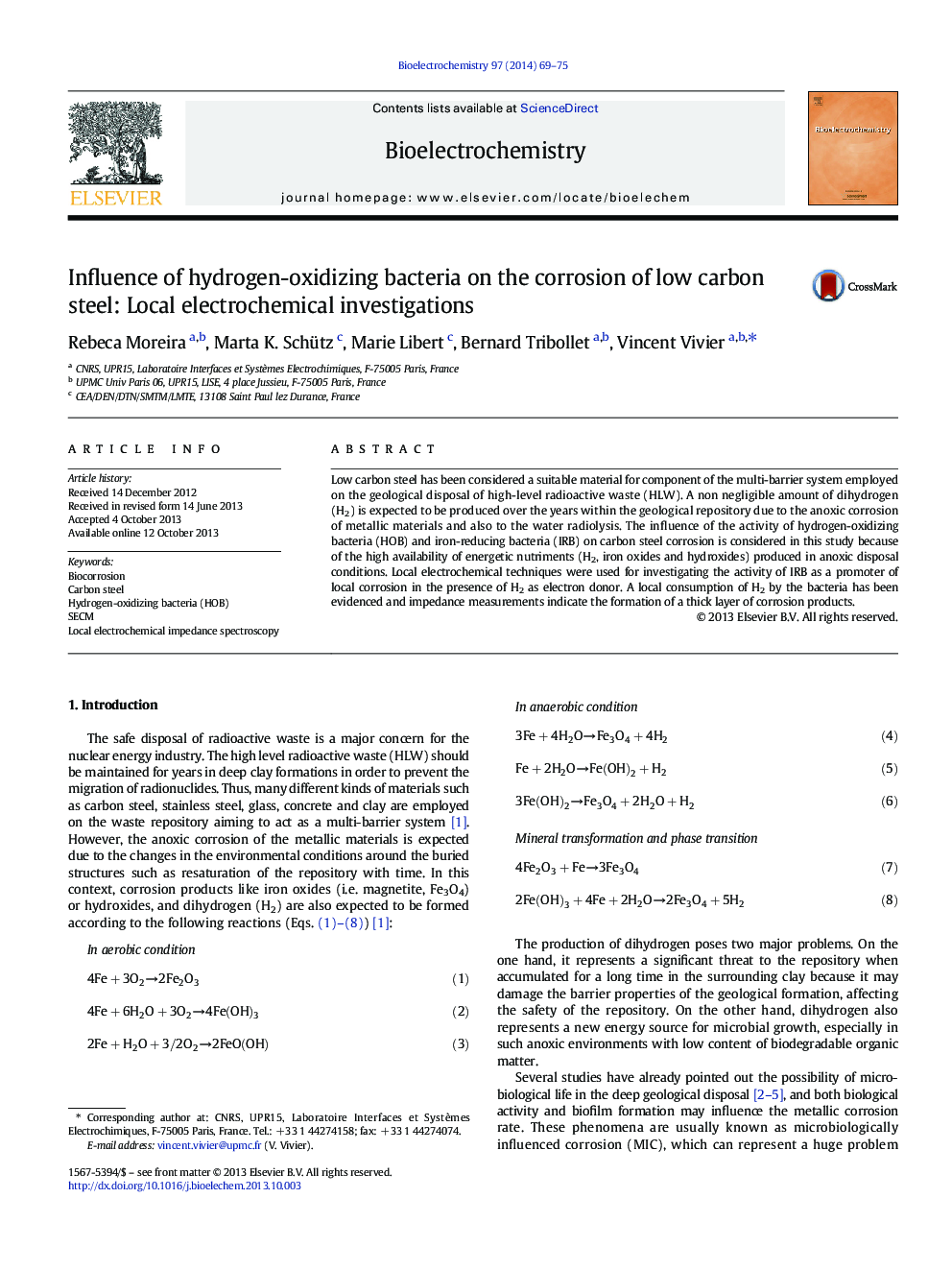| Article ID | Journal | Published Year | Pages | File Type |
|---|---|---|---|---|
| 1267993 | Bioelectrochemistry | 2014 | 7 Pages |
•The SECM was used to generate H2 in the vicinity of hydrogen-oxidizing bacteria.•The use of the SECM allowed evidencing the H2 consumption by the bacteria.•The high capacitance values (from 300 µFcm-2 to 750 µFcm-2after five days) were ascribed to the development of a biofilm.•A general corrosion mechanism was evidenced by LEIS results and SEM observations.
Low carbon steel has been considered a suitable material for component of the multi-barrier system employed on the geological disposal of high-level radioactive waste (HLW). A non negligible amount of dihydrogen (H2) is expected to be produced over the years within the geological repository due to the anoxic corrosion of metallic materials and also to the water radiolysis. The influence of the activity of hydrogen-oxidizing bacteria (HOB) and iron-reducing bacteria (IRB) on carbon steel corrosion is considered in this study because of the high availability of energetic nutriments (H2, iron oxides and hydroxides) produced in anoxic disposal conditions. Local electrochemical techniques were used for investigating the activity of IRB as a promoter of local corrosion in the presence of H2 as electron donor. A local consumption of H2 by the bacteria has been evidenced and impedance measurements indicate the formation of a thick layer of corrosion products.
Graphical abstractFigure optionsDownload full-size imageDownload as PowerPoint slide
